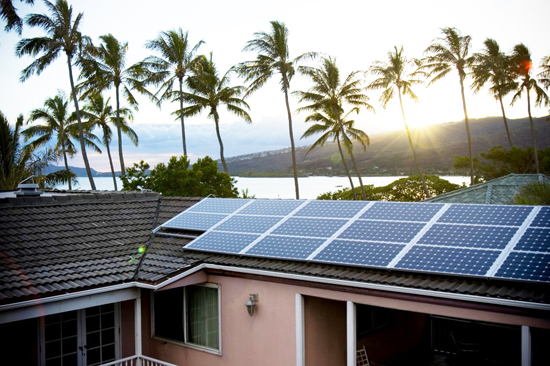
The energy cooperative on Kauai oversaw the massive Anahola solar project. Even better, as the grid becomes greener over time, so too will electric vehicles, as they help to enable more renewable electricity and lower electricity costs. Electric vehicles can give us cleaner, cheaper, and quieter transportation. Working with electric utilities, car dealers, bus systems, and others, we can rapidly electrify our transportation fleet. Hawaii has a strong history of energy innovation, like Iolani Palace becoming the world’s first royal residence to be lit by electricity, in 1886. But without laying the groundwork today, we can’t expect to maintain progress tomorrow. These setbacks aren’t reflected in the data for the 2016 Report Card. That was particularly disappointing coming alongside a proposal to expand coal power on Oahu through 2022. Although some are in the works, several others were cancelled this year. Large-scale solar farms have not fared much better. This concept is sweeping across the nation, but yet another year has passed and Hawaii still doesn’t have a community solar option. They could be on an empty warehouse roof, or set in a small solar garden in your community. Panels could be installed at your neighbor’s house, or your church. “Community solar” can enable anyone to benefit from solar power. After years of advocacy by Blue Planet Foundation and others, the Legislature aimed to solve that problem in 2015. Good paying local jobs are at stake.Įven with steady rooftop solar policies, roughly half of us - renters, condo owners, and others - can’t put solar panels on our roofs. Electricity customers need more options, and small solar businesses across the state need and deserve steadier solar policies to maintain the momentum they’ve successfully created. For now, if somebody wants solar panels on their roof, it must be a “self supply” system that doesn’t share any of that clean energy with the grid.

The replacement program, “customer grid supply,” is already full. Last year, Hawaii became the first state in the country to end the phenomenally popular “net energy metering” program. The local solar industry is being strangled, beset by layoffs and reduced work schedules. They will join islands like Iceland, Kodiak, and Tokelau, who have already reached 100 percent. The latest versions forecast that Molokai and Lanai will reach 100 percent by 2030, with Maui and the Big Island getting there by 2040. Proposed utility plans for getting to 100 percent renewable electricity are slowly coming around.

Today is the perfect time to double down on that trend, before the state gets slammed with another oil spike. In fact, the price of solar and wind has been steadily dropping. But renewable energy is helping, particularly since it tends to have a fixed price and won’t get more expensive over time. Some of this good news is a product of near record-low oil prices. Electricity rates are at their lowest in years. Thankfully, we are back on a downward trend, at around 8 percent in 2015. In the early 1980s, Hawaii spent 14 percent of its disposable income on fossil fuels when the cost of oil spiked. We’re ahead of the game financially, too. This rooftop photovoltaic system powers a Tesla battery system at a Honolulu residence.

This rooftop revolution has built a local industry, generating jobs and tax revenues along with clean power. And rooftops are proving to be a particularly valuable resource, currently providing about seven times more power than solar farms. Solar power is leading this charge, having recently overtaken wind power as the state’s top renewable resource. With around 23 percent of sales coming from renewable resources, electric utilities are ahead of the 15 percent target set by law. For 2016, that snapshot shows that the renewable energy groundwork laid in prior years is paying off. Blue Planet Foundation’s Energy Report Card is a snapshot showing Hawaii’s progress at a particular point in time. Where are we on the road to 100 percent clean energy?Īnnual fossil fuel consumption in Hawaii is dropping.
BLUE PLANET FOUNDATION IMPULSE SERIES
Editor’s Note: This is the last of a three-part series by Blue Planet Foundation on Hawaii’s clean energy progress. In the final segment of the series introducing Blue Planet Foundation’s 2016 Energy Report Card, which launches today, we take a look at the big picture.


 0 kommentar(er)
0 kommentar(er)
